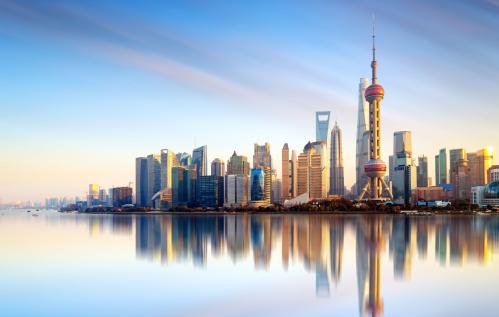When asked in the second presidential debate how he plans to deal with the U.S. trade deficit with Japan, President Clinton replied, “You just have to gut it out issue by issue by issue” and “fight to open those markets and go try make the sale.” That’s reassuring stuff, as Mr. Clinton and other leaders of the Asia-Pacific Economic Cooperation forum prepare to meet in the Philippines.
APEC members will submit their “action agenda” at Subic Bay C reforms designed to achieve free trade and investment in the Asia Pacific by 2010 for developed countries and by 2020 for developing countries. These reforms are intended to go beyond commitments in the recent Uruguay Round trade agreement: APEC governments have agreed to dismantle all impediments to international economic transactions, not only those imposed at borders such as tariffs, but also those arising from differences in domestic policies, regulatory systems and product standards.
But two big issues have the potential to derail APEC’s ambitions. The first is the capacity and willingness to accommodate China in the world economy. That will require a U.S. guarantee for China of unconditional most-favored-nation treatment, or equal tariff status with other countries. The second is a means of muddling through trade disputes. Unless these issues are dealt with decisively at Subic Bay, the cohesion of APEC will be at risk.
Accommodation of China by the United States is in the interest of the Asia Pacific region generally. China’s accession to the World Trade Organization—and to its predecessor, the GATT—has been the subject of negotiations drawn out over almost 10 years. Few nations appreciate the urgency of integrating China into the regional and international economy. At Subic, APEC members could come to a common position on the WTO issue and help break the gridlock.
China’s admission into the WTO would increase the value of the country’s economic reforms to its trading partners. Smaller trading partners, like the Asean economies and Taiwan, currently find their interests held hostage to negotiations between China and the United States.
Also, formal membership would strengthen the position of reformers in China and further deepen Chinese commitment to integration in the world economy. Their position has been seriously damaged by delays in settling the WTO issue.
The U.S. administration tends to view China’s WTO accession as a bargaining chip for enforcing U.S. trade policy. Commerce Secretary and former U.S. Trade Representative Mickey Kantor once described WTO accession as a “tool” at his disposal. The United States, along with others, fear that if China is admitted before it has met all market access requirements, opportunities for further reform will be lost.
China argues it is being treated in a discriminatory way—that the current approach, in rejecting its demands for special concessions, makes it almost unique among countries in the WTO. China points to the impressive set of trade-related policy reforms already implemented as a demonstration of its intent to be a constructive participant of the WTO.
This is a fair point. To date, China’s demonstrated capacity to work within APEC, and with the World Bank and International Monetary Fund, provides reassurance of its commitment to work within the multilateral system. Part of China’s WTO accession offer—a down payment on reducing tariffs—was one of the more impressive tabled at Osaka APEC last year. Reforms in financial and trading regulation, along with moves toward greater national treatment in its foreign investment regime, also were substantial.
It is also crucial for the APEC economies that any periodic flare-ups in U.S.-Japan and U.S.-China trade relations not jeopardize regional and multilateral objectives. The overlap of interests within the Asia Pacific region is now too great.
The perception that East Asian markets are closed while American markets are open is outdated. Under external pressure, but largely because of their own growing recognition of the benefits, East Asian governments have undertaken substantial unilateral trade liberalization. There is a widening consensus in East Asia that those who liberalize first and fastest gain the most.
Part of APEC’s confidence-building agenda at Subic must be to objectively assess progress in the liberalization which is taking place in each APEC economy, as well as the gains accruing to all participants.
Credible commitments by East Asian developing economies, backed by a firm commitment in Japan to pursue a more vigorous deregulation agenda, would enable President Clinton to report back to Congress on practical progress being undertaken in the Asia Pacific.
Accounting for almost 45% of the world’s trade and 55% of its production, APEC clearly has the muscle to move world trade liberalization forward. Washington should respond with a new strategy. That will require the United States to demonstrate a high degree of political skill, commitment, and leadership—with competing interests in the Americas and elsewhere diluting its focus on East Asia where the action is.
American business knows what is required. It knows that East Asia is the epicenter of world output and trade growth into the 21st century and that Americans will be the losers if that U.S. bridge to the next century does not provide an open road all the way to the region.

Commentary
Op-edChina, Trade Peace Key to APEC’s Future
November 21, 1996